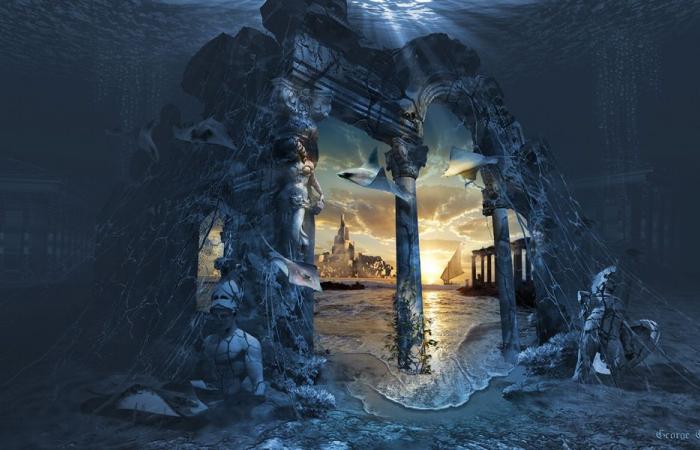Imagine yourself in the heart of ancient Italy, among myths and legends that have shaped our history. Explorers and enthusiasts, we take you with us on an adventure to discover Buca, the mysterious city of Frenta that emerges like a mirage from the waters of Molise. This enigmatic city, mentioned by ancient historians such as Pomponius Mela and Pliny the Elder, has been the subject of debate for centuries. Some placed it between Ortona and Vasto, others between Vasto and Termoli. Then, as if by magic, Buca disappeared from the maps, shrouded in mystery.
In the 1970s, thanks to the audacity of some archaeologists, the existence of a submerged site between the Torre del Sinarca and the coastal Tower of Petacciato was finally discovered. This area, now known as Aspro, could be identified with the thriving port city of Buca, once crucial to maritime trade. At the end of the 1970s, Professor Filippo di Donato, a modern Indiana Jones, hypothesized the existence of a submerged city by analyzing infrared aerial photographs of the northern coast of Termoli. In the 1990s, another adventurous scholar, Professor Piergiorgio Data, conducted further investigations, producing spectacular video images of the dives made by Sergio Cipolla. These videos, broadcast on national and local television networks in Abruzzo, captured the imagination of many.
The exploration covered approximately 1000 m2 and revealed the remains of perimeter walls of varying heights, from a few centimeters up to 4 metres. Various brick or limestone walls were identified, three bases of quadrangular buildings, a brick construction, various slabs of different sizes, a Doric column and clay materials of various kinds. According to Data, the sinking of the coast could have been caused by a landslide or a seismic event. With very high probability, it is the ancient Oppidum Frentano of Buca, an important maritime port from the time of Augustus, cited by Strabo, Ptolemy, Pliny and Mela, and mysteriously disappeared from geographical maps.
Further support for this theory came from the discovery of a Frenta necropolis in Porticone, about 2 km from the coast. The excavations of the necropolis, begun in 1978 by the Archaeological Superintendency for the Architectural and Historical Heritage of Molise, have brought to light over one hundred tombs dating back to the second half of the 6th century BC. The tombs, located along the southern ridge of the Sinarca torrent valley, show an interruption in attendance in the 5th century BC, which resumes at the end of the same century and increases slightly. between the second half of the 4th and the 3rd century BC, when the area ceased to be used as a necropolis. Some finds, such as a paved road, clay processing waste, fragments of vases, loom weights and lumps of clay, suggest the activity of a brick kiln between the 2nd and 1st centuries BC
Further evidence indicates the existence of a paved road that, starting from the beach, plunges into the sea. The northern coast of Termoli, rich in clay, has recently seen fresh water springs re-emerge near the shore. Since 2010, research has continued with the Atlantis Project, which led to the recovery of two lead stumps of Roman anchors. These findings confirm the importance of the coastal area as a crucial hub for maritime trade in Roman and pre-Roman times.
The research continues, and as true explorers of the ancient, we eagerly await further discoveries that can reveal new secrets of this fascinating submerged site. Adventurers and archeology enthusiasts, get ready: Molise’s Atlantis still has many stories to tell.






